
I visited North Korea a while ago and came back with amazing stories and photos. Here is a list of some of the attractions that I found most interesting.
Read my full story A fascinating glimpse into the Hermit Kingdom of North Korea. Also, read my 10 facts to know before travelling to North Korea.
What to see in Pyongyang
At the top of the attractions list is to watch a few local TV stations! All North Korean television stations are propaganda machines, promoting the Worker’s Party position and demonising all things Western. The typical programming includes news (watch out for the famous lady Ri Chu–hee), revolutionary operas, patriotic music, marching bands, army choirs, documentaries about the Worker’s Party, military parades, locally produced movies, and lately a lot of footage showing Marshall Kim Jong-un and his very happy and satisfied interactions with his subjects.
I did not notice any TV commercials for products or services. During the weather forecast you will see one Korean country going all the way down to Jeju Island off the southern tip of the Korean Peninsula.
Pyongyang has no shortage of very impressive
Stalinist architecture.
A trip to North Korea is not complete without the sites they want you to see: the showpieces of the regime, the points of hero-worship such as Kim Il-sung Square and the towering statues at Mansudae Grand Monument where we had to bow in front of the statues of the two dead leaders. It was no big deal at all, so we just did it. The Tower of Juche with its stunning views over Pyongyang, the Founding Party Monument, the captured American spy ship USS Pueblo at the War Museum … so many places they wanted to show us!
☛ Read more: A fascinating glimpse into the Hermit Kingdom of North Korea
We ran out of time and could not see the War Museum, but our minders then arranged with the museum to open one hour earlier to accommodate my friend and me, and two people to show us the museum. Their agenda was obvious. As we started with a 15 minutes long propaganda video about “how the American Imperialists started the war”, I asked if we could skip the video and see more of the museum, but were told we had to watch the video.
Not to be missed attractions in Pyongyang:
1. Mansudae Grand Monument
This is one of the most revered places in all of North Korea. People come from far and wide to pay tribute, bow and lay flowers, at two 22.5 metres tall statues of Kim Il-sung and Kim Jong-Il. On the wall behind the statues is a mosaic of the Paekdu Mountain located on the border between North Korea and China, the reputed birthplace of Kim Jong-il. The fact is that he was born in the Soviet Union while his father was in exile during the Japanese occupation of Korea.
The statues are flanked by monuments showing many soldiers, workers, and farmers, depicting the Anti-Japanese Revolutionary Struggle and the Socialist Revolution. The monument was first constructed with Kim Il-sung, but shortly after the death of Kim Jong-il his statue was added.
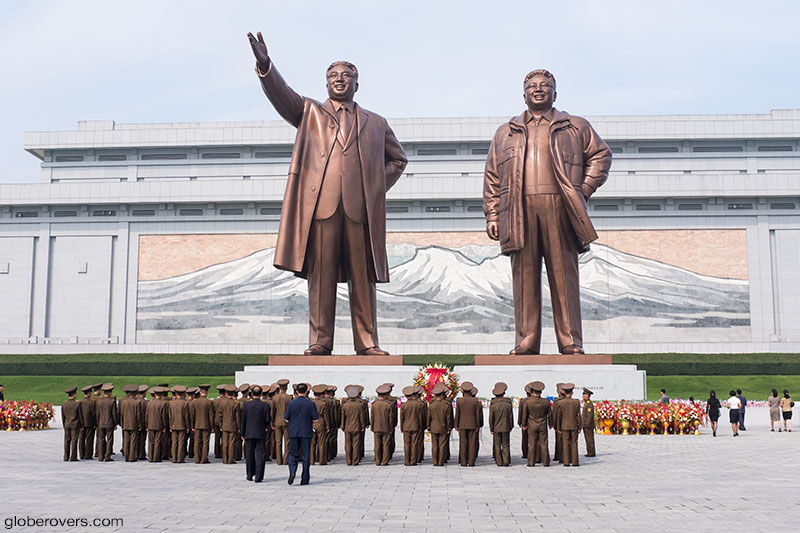
2. Kumsusan Memorial Palace of the Sun
Another highly revered place is the mausoleum where the embalmed bodies of Kim Il-sung and Kim Jong-il are laying in glass sarcophagi. This former residence of Kim Il-sung, the Kumsusan Palace, was converted by Kim Jong-il into a mausoleum at the time of his father’s death in 1994. Kim Jong-il’s body was added when he died in 2011. North Koreans come here en masse to pay their respects to the dead bodies of the eternal leaders. A visit here is easily one of the weirdest you’ll have anywhere in the world, even surpassing your visits to the embalmed bodies of Lenin (Moscow) and Mao Zedong (Beijing). Dress codes, security, and behaviour rules are very strict. Prior to entry, you will be dusted off by both automatic shoe cleaners and a giant clothes-dusting machine to ensure no dirt is trampled into the viewing hall.
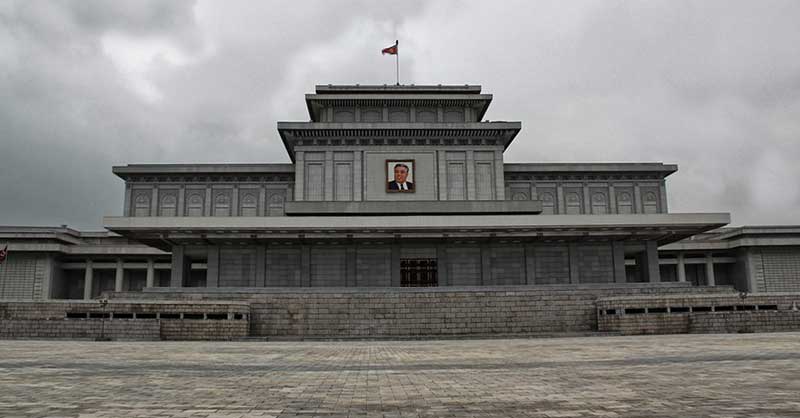
3. Pyongyang Arch of Triumph
Built in 1982, it is modelled after the Arc De Triomphe in Paris, but at six metres taller makes this arch the second tallest in the world. It was built to commemorate and glorify Kim Il-sung’s role in the Korean resistance to the occupation of Japan from 1925 to 1945. Engraved in the middle of the arch is the revolutionary hymn “Song of General Kim Il-sung”,” which is recited on national television every day.
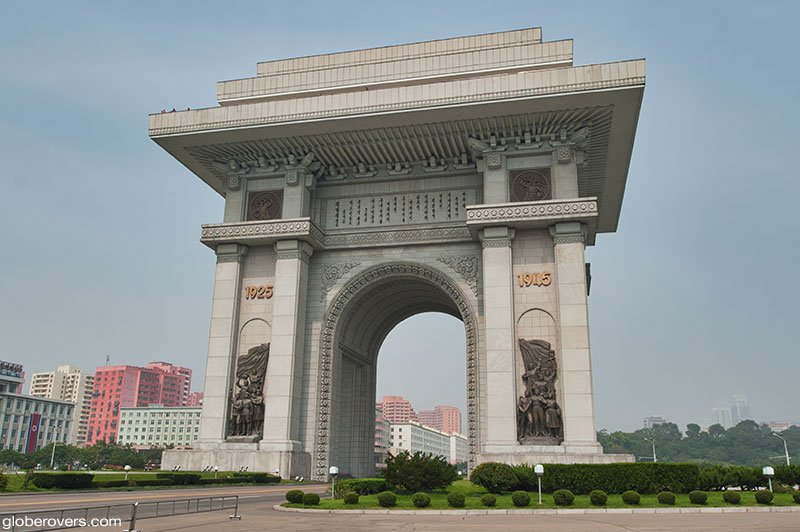
4. Kim Il-sung Square
Known for its extravagant military parades and well-coordinated mass dances we have seen on our TV screens, the large Kim Il-sung Square is not easily outdone by similar showcases of power in Moscow’s Red Square or Beijing’s Tiananmen Square. This is the heart of North Korea! Several buildings of notable significance surround the square, such as the Korean National Art Gallery, the Korean Central History Museum, and the Grand People’s Study House.
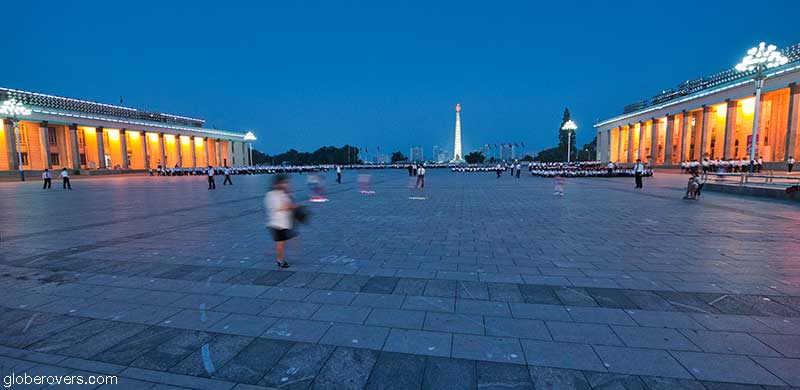
5. Juche Tower
A short distance from Kim Il-sung Square, on the west bank of the Taedong River, stands the 170 metres tall granite tower, named after the self-reliance ideology of Juche introduced by Kim Il-sung. Constructed from 25,550 blocks (365 × 70: one for each day of Kim Il-sung’s life, excluding supplementary days for leap years) its top is capped with a 20 metres high, 45 tons, illuminated metal torch. It was unveiled to mark his 70th birthday in 1982. Take the elevator to the top (€5) for great panoramic views over the city. The elevator is operated by a lady dressed in a spectacular wide pastel coloured dress. The balcony at the top has open views without any glass, allowing for great photos of the city.
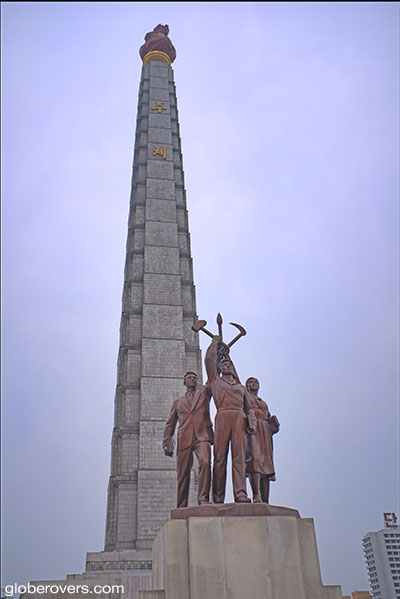
6. Other towers
Other towers worth visiting are the Tower of Immortality (the writing on this tower through the base of which traffic drives, pledges that the ”Great Leader Kim Il-sung and the Dear Leader Kim Jong-il will always be with us”), the Liberation Tower commemorating the Soviet liberation of Pyongyang from Japanese rule in 1945, the Sino-Korean Friendship Tower which is a television tower built as a gift from the Chinese to the DRPK, and the 1967-built, 150 metres high Pyongyang TV Tower, copied from the Ostankino Tower in Moscow, with a restaurant and observation deck at the top.
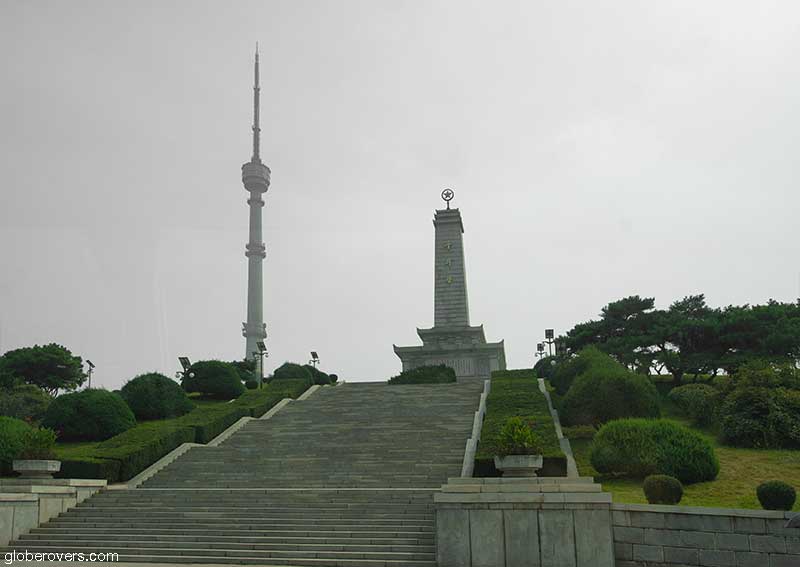
7. Monument to the Foundation of the Workers’ Party
Built to commemorate the 50th anniversary of the North Korean Workers Party in 1995, the monument is rich in symbolism: the hammer, sickle and calligraphy brush symbolise the workers, farmers and intellectuals. Each of these pillars stands at a striking 50 metres tall signifying the 50 years since the creation of the party. The inscription on the outer belt reads: “The organisers of the victory of the Korean people and the leader of the Workers Party of Korea!” All over the monument is symbolism about the history of the Korean nation and the birthday of Kim Jong-il. It appeared on postage stamps in 1995 and 2005 as well as on the current 50 Won banknote.
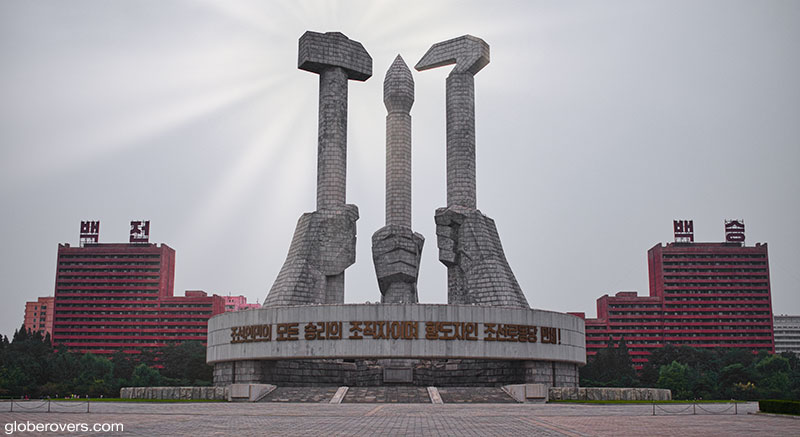
8. Grand People’s Study House
This massive celebrated library on Kim Il-sung Square is by far the country’s largest library with a total floor space of 100,000m2, complete with 600 rooms and the capacity to hold up to 30 million books. Constructed during 1982 in a traditional Korean style to celebrate leader Kim Il-sung’s 70th birthday, it was built with the intent of educating the entire populace, in particular on the topic of Juche studies! All Koreans over 17 years old are eligible to receive free lectures on various topics, even the English language. There are also computers to browse the North Korean intranet.

9. Ryugyong Hotel
Pyongyang’s pyramid-shaped Ryugyong Hotel is one of the world’s most conspicuous construction project failures. Intended to be the world’s tallest hotel, it is now nearly as old as North Korea’s current leader Kim Jong-un, though nobody has ever slept here. Nearly 30 years since construction started, the glass pyramid looms dark and eerie in the Pyongyang night, with only a single red light at its apex blinking a silent warning to aircraft. Standing 105 floors high, construction began in 1987 and was supposed to be completed in just two years.
For various reasons such as the collapse of the Soviet Union in late 1991, a major economic crisis, and then a famine that brought North Korea to the verge of collapse, the hotel remains nothing but an outer shell which was eventually completed in 2011. Our minder informed us that the hotel will “open soon”. With 360,000 square metres of floor space which will include apartments and offices along with hotel facilities, it is hard to imagine this hotel ever being filled to capacity. The hotel continues to be the world’s largest unoccupied building.
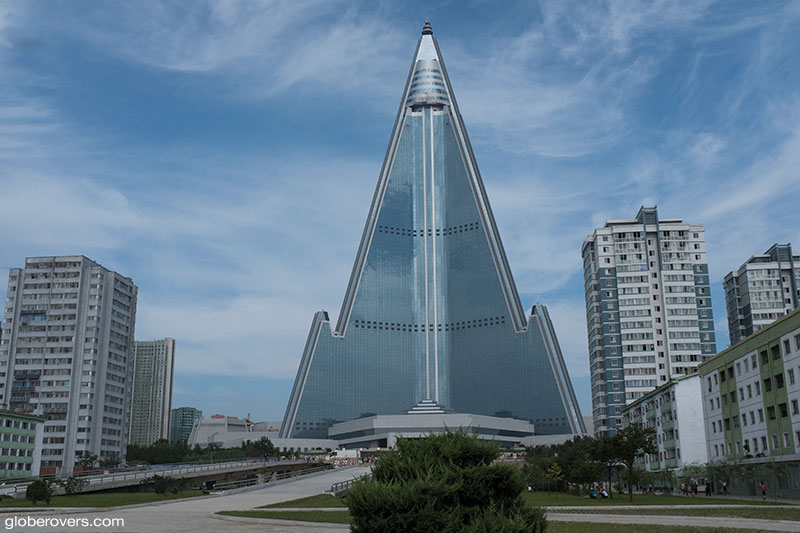
10. Chollima Statue
This impressive statue portrays Chollima, the Korean Pegasus, which literally means “thousand-mile horse”. It was built as a symbol of the speed and perseverance of North Korean workers. The symbol itself is of Chinese origin, a magical horse that is so fast, no man can mount it. It’s an example of how the North Korean state has incorporated traditional Asian myths into its cult. Kim Il-sung appropriated the myth in 1956 during the period of reconstruction following the Korean War. Known as ‘Chollima Speed’, it depicted the speed at which North Korean workers rebuilt their shattered nation and constructed monuments to honour their leadership. His slogan was “Let us dash forward in the spirit of Chollima!”
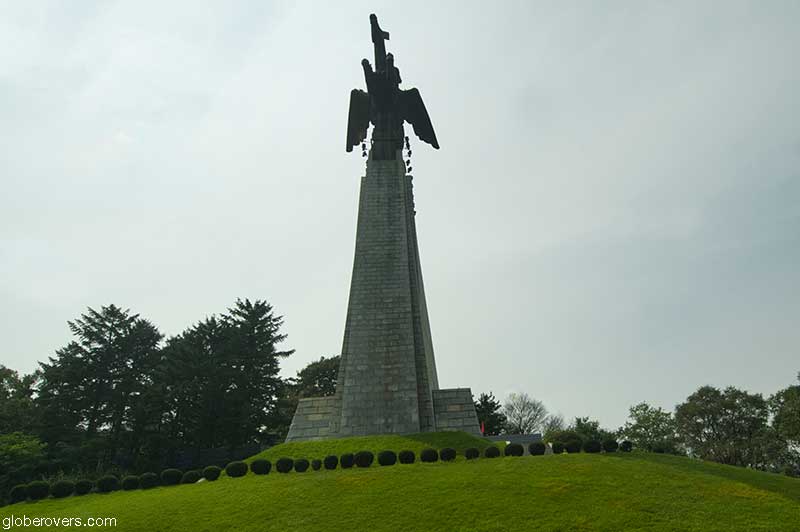
11. Tomb of Tan’gun
The government announced in 1993 that its archaeologists had discovered the tomb of Tan’gun, the founder of the first Korean kingdom. However, it wasn’t until recently that the North Korean historians “made the incredible discovery that revealed that Tan’gun was in fact a member of the Kim clan.” The pyramid-shaped tomb of King Tan’gun, located south of Pyongyang, is an impressive mausoleum that hosts the decayed bones of both the King and his wife. A small museum stands nearby, displaying artefacts from Tan’gun’s times, said to have been found in and around the tomb.
12. Victorious Fatherland Liberation War Museum
The colossal Victorious Fatherland Liberation War Museum is one of the most grandeur museums in the world, and perhaps the very best museum in Pyongyang. After a long renovation, it opened its new doors in 2013 to mark the 60th anniversary of the end of the Korean War, to tell the story of the Korean people’s fight against foreign invaders. In the foyer stands a massive statue of a young Kim Il-sung, where he looks exactly like his grandson, Kim Jung-un. Or rather, his grandson is trying to look just like his revered grandfather! One of the many impressive displays are the 360 degrees diorama depicting the battle of Daejon and the captured American helicopter from the Korean War.
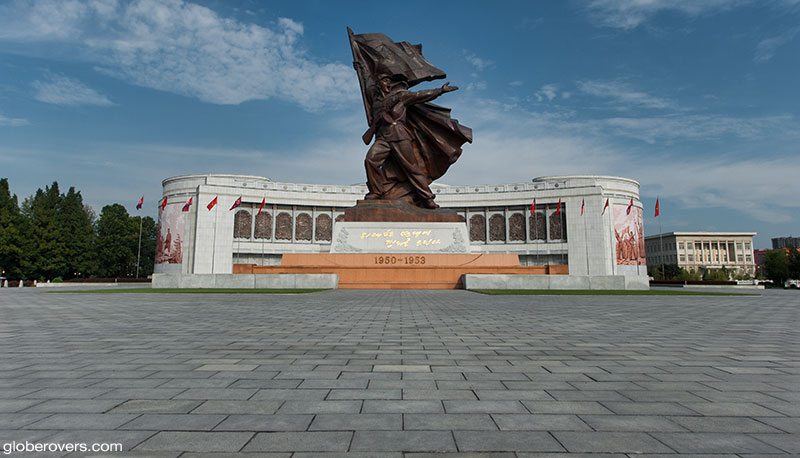
Unfortunately, no photography is allowed anywhere inside the museum. Outside the museum are many war-damaged American tanks, weapons and aircraft, including the most prized capture, the USS Pueblo ship that was operated by US sailors who were held prisoner for 11 months before their release. The ship has been converted into a museum, and comes complete with a guide who has a triumphant Korean story about everything related to the capture of the ship.

Other notable museums in Pyongyang include the Korean Revolution Museum, which despite its misleading name, is focused on documenting the death of Kim Il-sung, including a film of the extraordinary public reaction to his death. The Party Founding Museum is a monument to the Fallen Soldiers of the Korean People’s Army. The Mangyongdae Revolutionary Museum and the Korean Central History Museum are all rather predictable with a large number of exhibits showing the struggle against American and Japanese imperialism and oppression. The Metro Museum depicts and glorifies the roles of Kim Il-sung and Kim Jong-il in the construction of the Pyongyang metro.
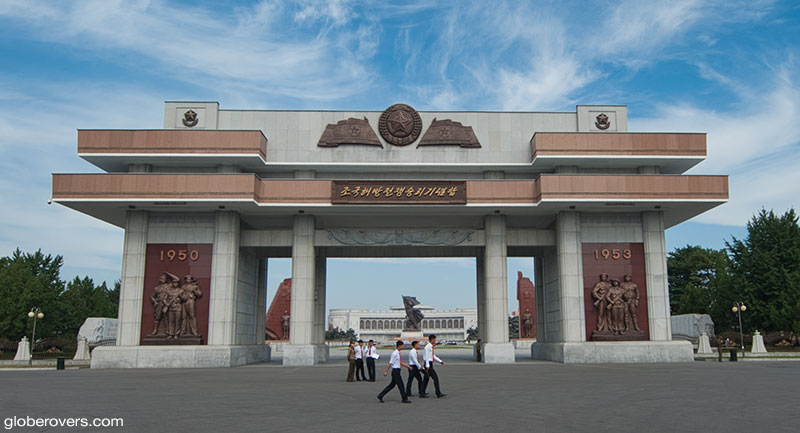
13. The Pyongyang Metro
For just 5 Won (less than 1 US cent), you can explore one of the world’s deepest subway systems (over 110 m deep) where it takes over three minutes going down by escalator to reach the platforms. On a busy day, it is reported that some of the busy stations transfer around 700,000 people. Daily ridership is estimated to be between 300,000 and 700,000, enough proof that Pyongyang is a bustling city.




Murals inside the Metro Station, Pyongyang
14. The Gates of Pyongyang
Around Pyongyang, take note of the old city gates, including the Taedong Gate, Chilsong Gate, and the Potong Gate, constructed in the 17th and 18th centuries. The latter was destroyed by American bombings during the destruction of Pyongyang in the Korean War, but was reconstructed in 1955.
15. Three Revolutions Exhibition
This enormous museum complex showcases the three revolutions of Kim Il-sung brought about in post-war Korea: the ideological, technical, and cultural. The six halls detail advances across the board in electronics, heavy industry, light industry, agriculture and technology (advances appear to be fairly slim though, with all the technical exhibits looking more like a display of antiques). The central building, a planetarium, has a shape resembling a spherical planet with rings around it, similar to the planet of Saturn; somewhat reminiscent of Florida’s Epcot Centre theme park.
16. The Demilitarized Zone (DMZ)
If you have been to the South Korean side of the border, you will know the feeling of gazing over into North Korea; that feeling of “I so much wish I could visit that mysterious country, though it seems so impossible”. Once you are in North Korea and venture down to the DMZ, staring at South Korea, you will think out loud “Yes, and so here I am on the other side!”.
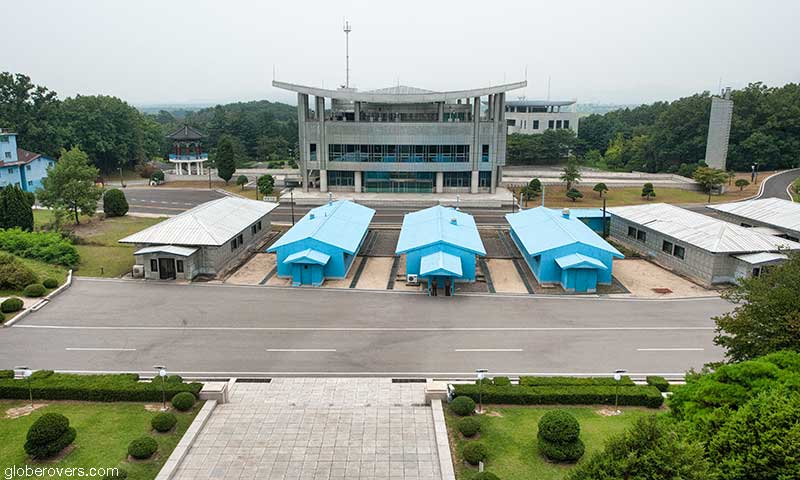
The narrative on both sides of the border is like black and white. There are very different interpretations of the war that divided these two parts of the Korean Peninsula. As we did not see any South Korean soldiers on the other side of the dividing line, our minders reckoned that they are too scared of the North Korean soldiers to show their faces!
Between 1953 when the armistice was signed, and 1972, thousands of South Korean soldiers and agents infiltrated North Korea. Since then, the north has secured the border to such an extent that this is now the most heavily militarized border in the world.
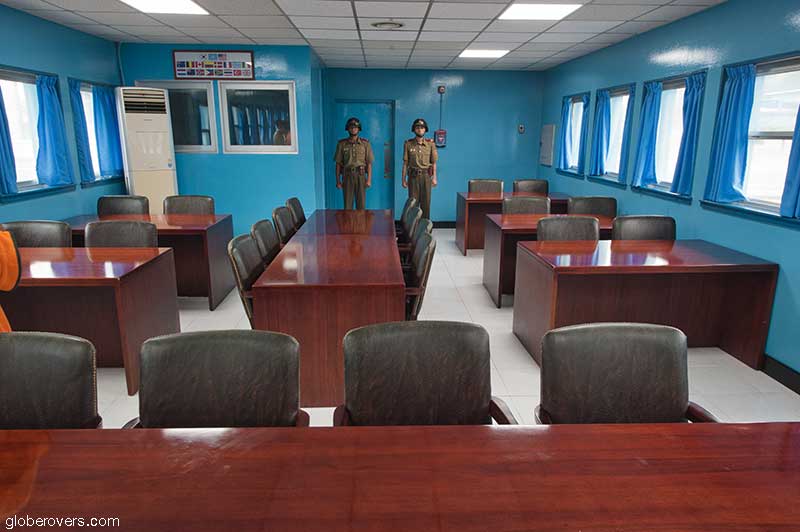
Standing on the southern side of the Joint Security Area (JSA) at the border, you expect to see heavy armoury on the north side, though nothing is visible. Similarly, standing on the north side of the border, there is no sign of the military, although tourists are strictly chaperoned into the information centre at the “Truce Village” and then to the JSA’s blue buildings, and swiftly back to the bus. There is somehow an eerie warlike-peace in the air.
The buildings on the North Korea side display a variety of paraphernalia used during the signing ceremony, with guides offering lots of demeaning comments about the UN and USA participation in the armistice signing.
☛ Read more: 10 facts to know before travelling to North Korea
Other attractions
Other attractions include the Mangyongdae Children’s Palace, Kim Il-sung Stadium, the May Day Stadium, Mangyongdae Funfair, Korean National Art Gallery and several theatres such as the Mansudae Art Theatre, Pyongyang Grand Theatre, Moranbong Theatre, East Pyongyang Grand Theatre, and the Pyongyang Circus. Don’t miss an acrobatic performance in the new Pyongyang Circus. The breathtaking acrobatics and trapeze acts are performed in front of a large screen showing the destruction of the Americans!
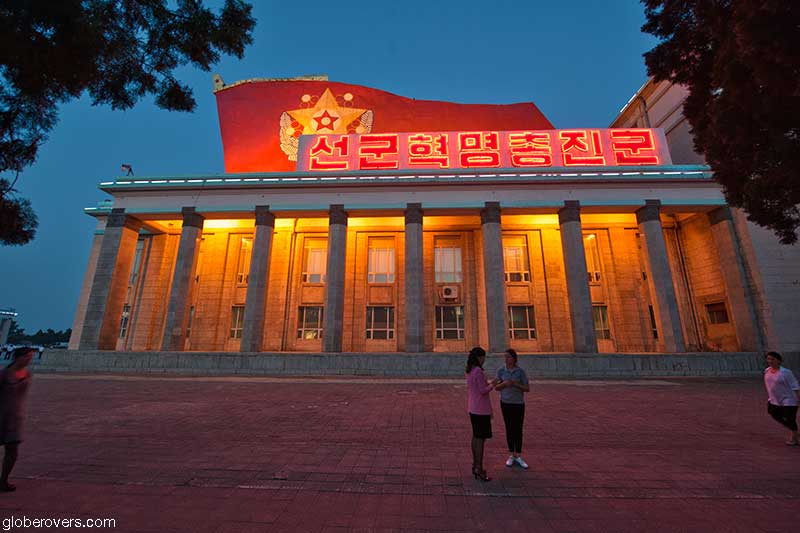
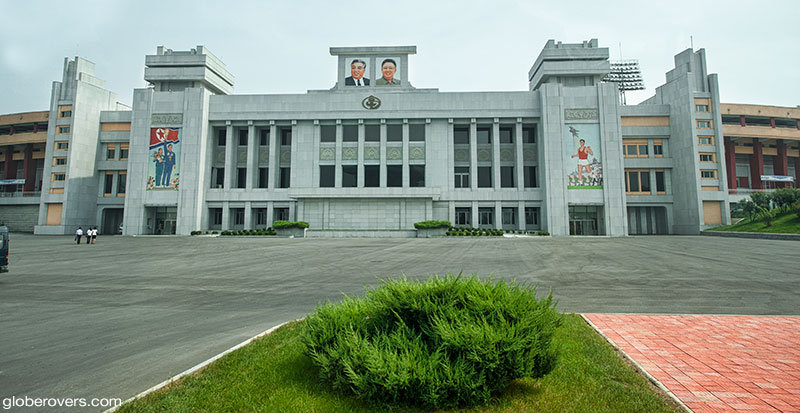
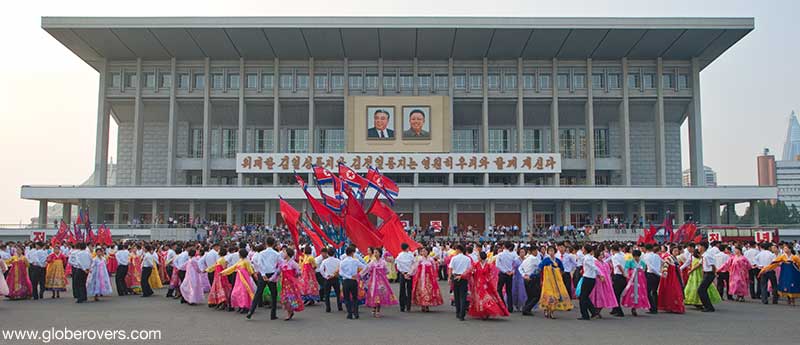
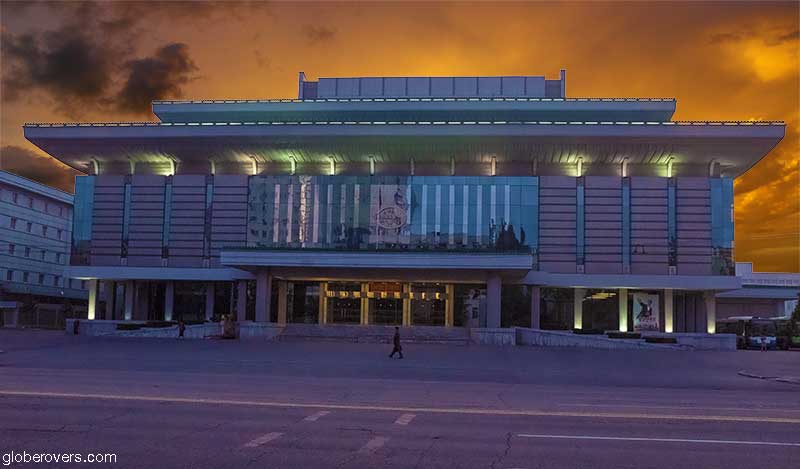
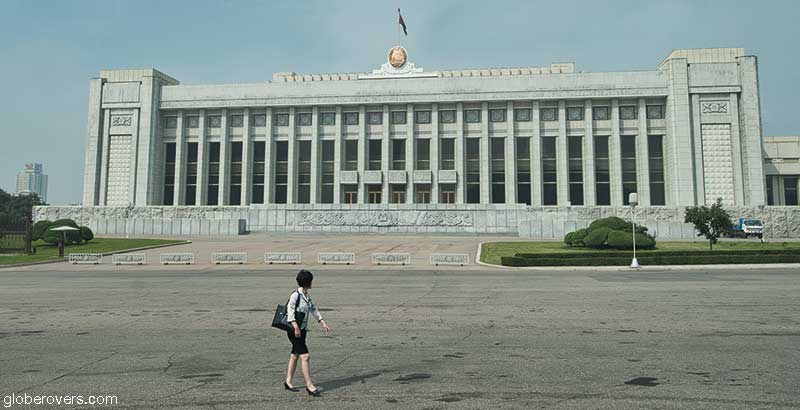
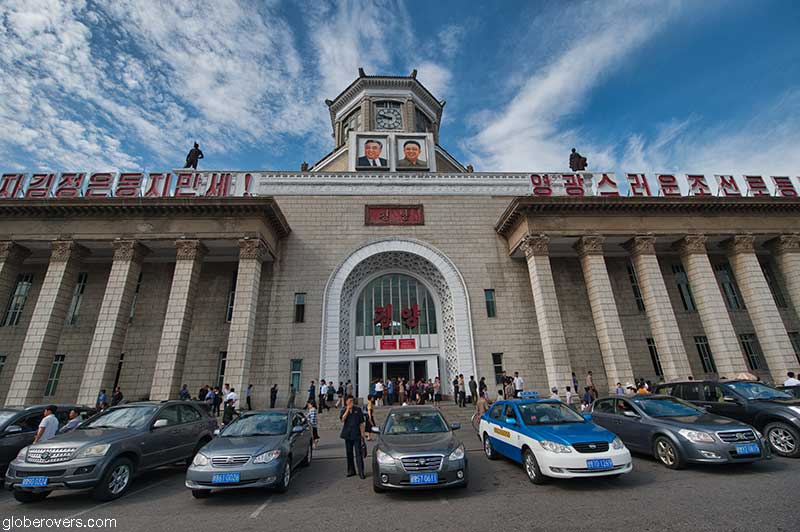
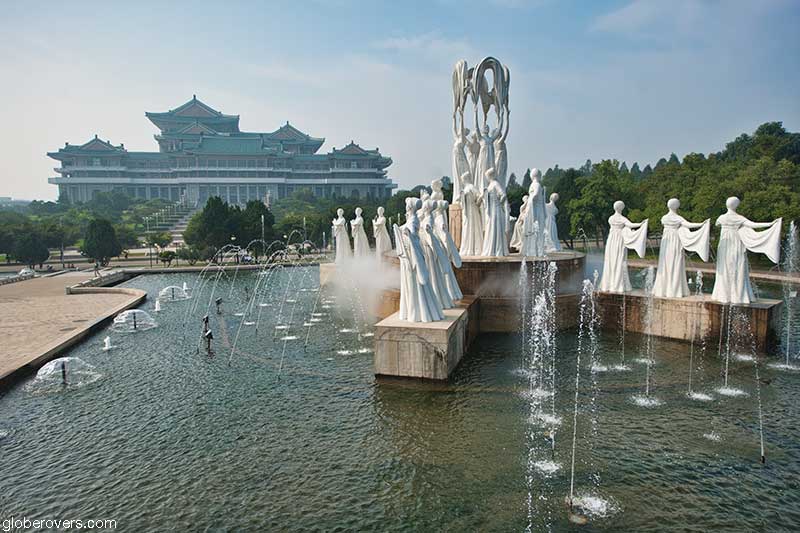

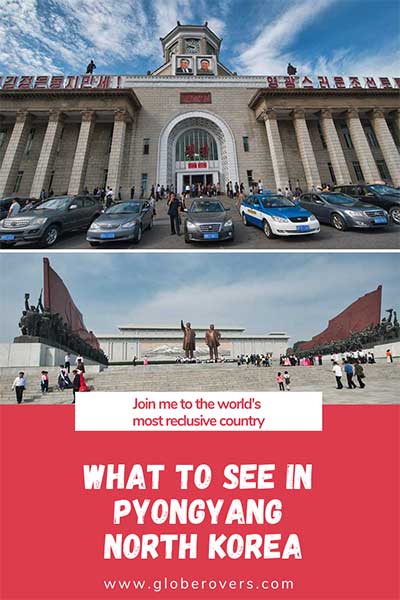
Further reading
- Beautiful Pyongyang – A different look at North Korea’s capital
- A fascinating glimpse into the Hermit Kingdom of North Korea
- 10 facts to know before travelling to North Korea

Blog post and photos by Peter who has been travelling almost full-time since 2005 and has been to over 122 countries. He visited several countries, such as Japan, more than 20 times. Peter is Editor-in-Chief and Publisher of GlobeRovers Magazine, an independent travel magazine focused on intrepid destinations.


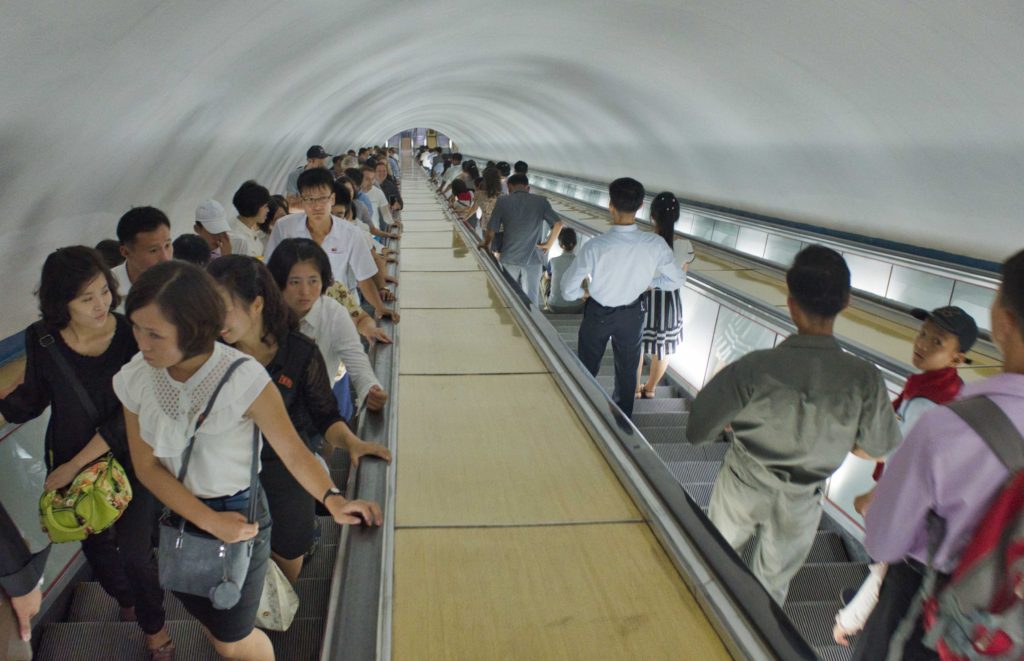
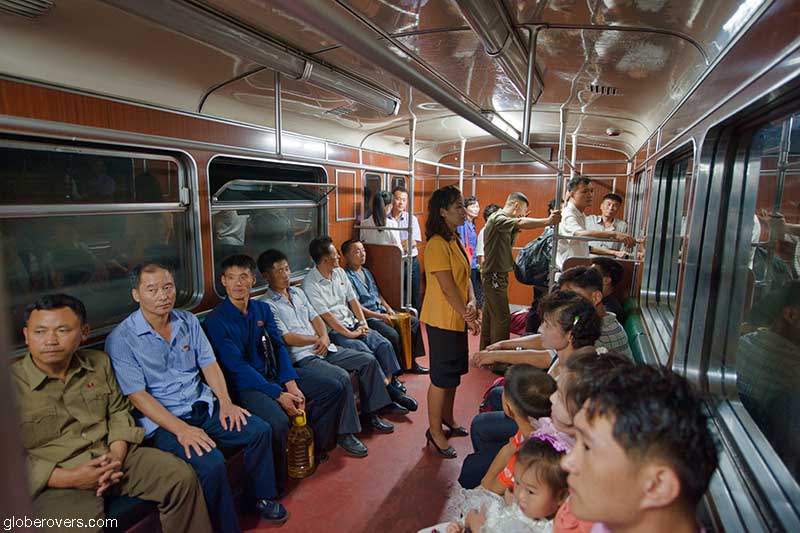
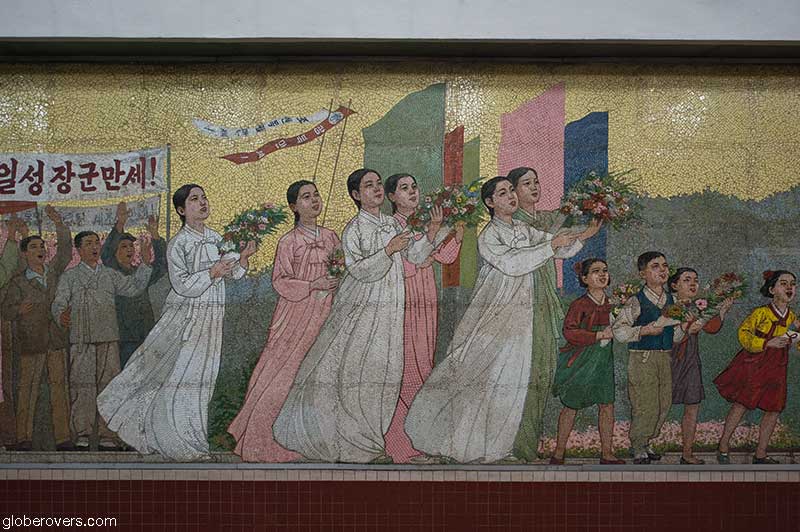
1 comment
[…] The Mansudae Grand Monument, statues of Kim Il-sung (left) and Kim Jong-il (right) in Pyongyang, North Korea. Source: GlobeRovers […]